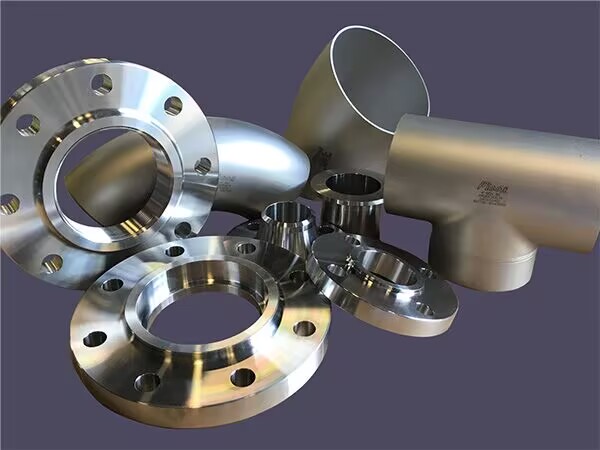Pipe fittings are a key component in a pipe system that connects, transforms, controls and supports pipes. They play a vital role in a variety of industrial sectors, including petroleum, chemicals, power, metallurgy, shipping, and construction. The diversity and functionality of pipe fittings make it suitable for different scenarios, and according to its use and function, it can be divided into several categories such as connection pipe fittings, conversion pipe fittings, control pipe fittings and support pipe fittings.

Connecting pipe fittings are components that effectively connect two or more pipes to ensure the integrity of the piping system and the smooth flow of fluids. Common connection fittings include elbows, tees, quads, flanges and bushings.
Elbow: Used to change the direction of the pipe, the common Angle is 45 degrees, 90 degrees and 180 degrees, suitable for different pipe distribution needs.
Tee: The three pipes are connected together, which can be divided into equal diameter tee and reducing diameter tee, suitable for the scene of multi-pipe intersection.
Four-way: Four pipes are connected together, similar to the three-way, also divided into equal diameter and reducing two forms, for more complex pipeline networks.
Flange: is a removable pipe connection element, easy to connect and disassemble between pipes, but also can connect the pipe to the equipment, often used in high pressure scenarios.
Casing: Usually used to connect two pipes of different diameters to ensure a smooth transition of fluid between pipes of different diameters.
The conversion pipe fittings are mainly used to adjust the diameter, wall thickness or shape of the pipe, and the common types include flaring pipe, shrinking pipe, reducing pipe and reducing pipe.
Flaring pipe: Used to increase the diameter of the pipe, usually used in situations where the flow rate needs to be increased or the connection with a larger diameter pipe is required.
Shrinkable pipe: In contrast to flaring pipe, the pipe diameter is reduced to meet the needs of reduced flow.
Reducing pipe: Used to connect two pipes of different diameters to avoid abrupt changes in fluid flow through a gradual design, thereby reducing pressure drop and fluid disturbance.
Reducing pipe: Connecting pipes of different diameters together to maintain continuous flow of fluid between pipes of varying diameters, commonly used in the chemical and petroleum industries.
The control pipe is responsible for regulating, guiding and protecting the flow, pressure and temperature of the fluid in the pipeline system, and is an important element to ensure the safe operation of the system. Common control fittings include stop valves, regulating valves, relief valves and check valves.
Shut-off valve: Used to completely cut off or turn on fluid flow, suitable for piping systems requiring frequent opening and closing.
Regulating valve: can adjust the flow size according to the need, suitable for the need for precise control of the process.
Safety valve: Automatically open pressure relief when the system pressure exceeds the set value, to protect the safety of equipment and pipelines, is an indispensable component in high pressure systems.
Check valve: Prevents the flow of fluid back, ensuring that the fluid in the pipe can only flow in a single direction, often used to prevent system problems that may be caused by backflow.
The role of supporting pipe fittings is to ensure that the pipe system has sufficient stability during operation, while resisting displacement or deformation caused by external forces or environmental changes.
Boom: Used to hang the pipeline in the air, suitable for long-span pipeline layout, to avoid pipeline sinking or damage.
Bracket: Provides pipe support, usually used for ground or short distance pipe installation, easy maintenance and stability.
Compensator: Solve the problem of thermal expansion and cold contraction caused by temperature change, reduce stress concentration, and ensure the stability and service life of the pipeline system.
Material and selection of pipe fittings
According to the different application scenarios, pipe fittings are made of a variety of materials, including carbon steel, stainless steel, aluminum alloy, copper and plastic.
Carbon steel fittings: suitable for high-strength and pressure-resistant scenarios, such as the oil and gas industry.
Stainless steel pipe fittings: with good corrosion resistance, suitable for food processing and chemical industry.
Plastic pipe fittings: light weight, easy to install, widely used in residential building water supply and drainage system.
When selecting pipe fittings, the working pressure, temperature, fluid properties and construction environment should be considered comprehensively to ensure that the selected pipe fittings can meet the actual needs and meet the relevant technical standards.
The role of pipe fittings in modern industry
Pipe fittings are an integral part of modern industry, and their diversity and functionality enable them to adapt to complex industrial needs. In the petrochemical industry, pipe fittings ensure the safe transport of fluids; In the field of construction, pipe fittings support the operation of water heating systems; In the metallurgical and Marine fields, pipe fittings are the key connecting elements in complex pipe systems.
There are many kinds of pipe fittings with different functions, which is the core guarantee of pipeline system operation. From connection to control to support, each pipe piece plays an important role in a specific scenario. In practical application, reasonable selection of pipe fittings can not only improve the safety and efficiency of the system, but also effectively extend the service life of the pipeline system. By continuously improving the manufacturing technology and material performance of pipe fittings, future pipe fittings will be able to better meet the diverse needs of modern industry.